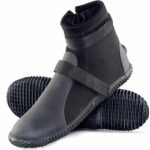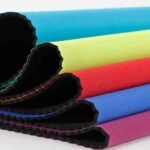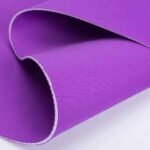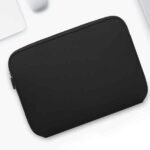Finding a wetsuit that fits just right can feel like searching for buried treasure—once you crack the code of measurements, you’ll unlock unparalleled warmth, comfort, and freedom in the water.
Pro Tip: A well‑fitting wetsuit can improve thermal efficiency by up to 20%, meaning more time surfing, diving, or paddling—and less time shivering!
To measure for a wetsuit, record your height, weight, chest, torso length, waist, hips, inseam, arm length, and shoulder span. Match these figures to your chosen brand’s size chart to ensure a snug, leak‑free fit.
I’ll never forget my first dawn dive off Maine’s rocky coast—my suit flooded so badly I was half ice cube, half scuba student. After dialing in these measurements, you’ll rock your next session without a single shiver.
Which Wetsuit Size Chart Should You Consult?
Every brand uses its own chart. Start with the manufacturer’s official size guide—this is your baseline.
Always begin by checking the brand’s official size chart. Charts vary across men’s, women’s, youth, and specialty styles, so pick the one matching your suit type.
-
Brand‑Specific vs. Universal Charts
- Brand A offers separate charts for cold‑water steamers and summer spring suits.
- Brand B uses a universal chart but flags recommended adjustments for thick suits.
-
International Conversions
Region Size Example Conversion Tip US M Equivalent to EU 50–52 EU 50–52 Matches US M, AUS 3 AU 3 Same as US M -
Specialty Charts
- Shorty suits often run small—size up if you’re between measurements.
- Hooded suits may include neck circumference guidelines.
How Do I Know My Wetsuit Size?
Match your exact measurements against chart ranges for height, weight, chest, and girth. If most of your numbers land in one size, go with that. If you straddle two sizes, choose based on thickness: thicker suits fit tighter.
Compare your height, weight, and key girth measurements to the chart. If you’re right on the border, opt for the larger size in a thick steamer, smaller in a thin spring suit.
- Muscular vs. Lean Builds: Athletes with broad shoulders often size up on chest.
- Thick vs. Thin Neoprene: 3 mm suits stretch ~4 cm; 5 mm only ~2 cm.
- In‑Store Fitting vs. DIY: Retailers let you test mobility; self‑measure at home for privacy.
What Are the Key Body Measurements Needed for a Wetsuit?
You’ll need: height, weight, chest, torso length, waist, hips, inseam, arm length, shoulder span, and (for hooded suits) neck circumference.
Record height, weight, chest and torso girth, waist, hips, inseam, arm length, shoulder span, and neck circumference. These nine metrics capture your body shape for an optimal fit.
- Height & Weight: Use a wall stadiometer and digital scale.
- Girth Measurements: Cloth tape around fullest points—no sucking in!
- Torso Length: From C7 vertebra to top of hip bone.
How Do You Measure Your Chest and Torso Accurately?
- Chest: Tape around the fullest part—parallel to the floor, tape snug but not tight.
- Torso Length: From the base of the neck (C7 vertebra) straight down the spine to top of hip bone.
For chest, wrap tape at the nipple line; for torso, measure from the C7 bump to the hip bone. Keep tape snug and straight for accurate readings.
- Tools: Flexible tape, mirror, friend to help.
- Common Mistakes: Taping over clothes, tape not level.
- Data Example: A 175 cm surfer may have a 96 cm chest and 55 cm torso.
How Do You Measure Your Waist, Hips, and Inseam?
- Waist: Natural waist above the belly button.
- Hips: Widest point of the buttocks—feet together.
- Inseam: From crotch to ankle bone along the inner leg.
Measure waist at your narrowest, hips at the fullest glutes, and inseam from crotch to ankle. These ensure snug leg seals and prevent bagginess.
| Measurement | Range (cm) | Range (in) |
|---|---|---|
| Waist | 70–90 | 28–35″ |
| Hips | 85–105 | 33–41″ |
| Inseam | 75–85 | 29–33″ |
Verification: Compare to generic apparel tables to catch errors.
How Should You Measure Your Arm Length and Shoulder Span?
- Arm Length: From center‑back neck point, over shoulder, to wrist bone (bend elbow 10°).
- Shoulder Span: Fingertip to fingertip across a T‑pose.
Measure arm from neck base to wrist for sleeve fit; shoulder span fingertip‑to‑fingertip ensures seam alignment across the back.
- Flexibility Factor: Broad‑shouldered paddlers might add 1–2 cm.
- Impact: Correct sleeve length prevents fabric pull and wrist gaps.
- Data Point: Average male span ~180 cm; female ~165 cm.
Do Wetsuit Measurements Vary Across Brands and Styles?
Absolutely. Cut, neoprene grade, and target water temperature all influence fit. Don’t assume universal size.
Fit varies by neoprene type, suit style (steamer vs. shorty), and brand tolerance. Always cross‑check your measurements with each brand’s chart.
- Neoprene Grades: Yamamoto #39 stretches 30% more than standard blends.
- Style Cuts: Farmer‑John vs. full steamer shapes differ at shoulders and crotch.
- Tolerance Bands: ±1 cm for pro lines; ±3 cm for budget suits.
Are There Tips for Ensuring Accurate DIY Wetsuit Measurements?
- Measure in a well‑lit room, wearing a tight base layer.
- Record each number twice, at different times of day.
- Use a helper to keep tape level.
For best DIY results, measure in close‑fitting clothing, double‑check key dimensions, use a friend, and note conditions (post‑workout vs. rested).
- Timing Matters: Morning vs. evening girth can vary 1–2 cm.
- Logging Results: Track date, humidity, and any deviations.
- Re‑Measure Critical Points: Focus on chest and torso if unsure.
Sample Wetsuit Size Chart
| Size | Height (cm) | Weight (kg) | Chest (cm) | Waist (cm) | Hips (cm) |
|---|---|---|---|---|---|
| S | 165–170 | 60–68 | 88–92 | 72–76 | 88–92 |
| M | 170–178 | 68–78 | 92–98 | 76–82 | 92–98 |
| L | 178–185 | 78–88 | 98–104 | 82–88 | 98–104 |
| XL | 185–190 | 88–98 | 104–110 | 88–94 | 104–110 |
Ready to Get Your Perfect Fit?
Armed with these exact measurement steps—complete with data tables and pro tips—you’re set to snag a wetsuit that feels tailor‑made. Want a custom‑cut neoprene suit designed just for you? Szoneier offers bespoke measurement consultations, free samples, and expert support. Contact us today and dive into your next adventure with confidence!














